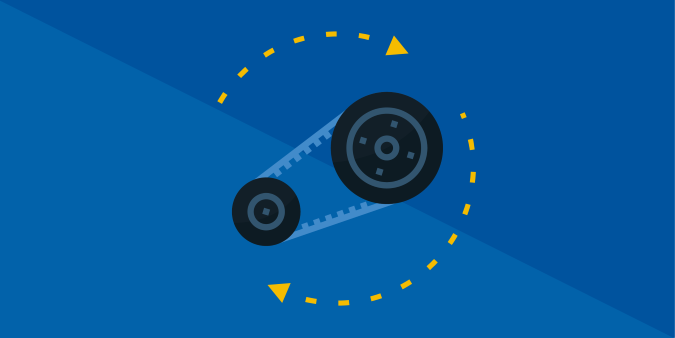The Serpentine Belt: Replacement & Related Maintenance
Remember that long belt that snakes around the front of your engine? It’s called the serpentine belt. The serpentine belt is driven by the engine as it turns.
It powers your alternator, air conditioning compressor, and power steering pump. On some vehicles, it also runs the water pump, radiator fan, and power brakes. Sounds like a lot of important stuff, doesn’t it?
When the belt breaks while driving
If your serpentine belt were to break on one of our West Des Moines, Iowa, roads, you might hear a loud snap or pop (the belt breaking) followed by any number of concerning sounds. You also might see the charging system warning light (a battery icon) pop up on your dashboard.
After the belt breaks, your battery would die in just a short distance. If the belt runs your fan or water pump, your engine could overheat. Not to mention steering and braking could be more difficult.
Obviously, the best way to keep yourself safe and prevent car damage is to replace your serpentine belt before it breaks.
Preventative maintenance before the belt breaks
Check your owner’s manual for when it’s recommended that you replace your serpentine belt – or just ask your West Des Moines, Iowa, service advisor at All Pro Servicenter by calling 515-453-8439. He can inspect the belt as well to see if it’s good to go, or if you’re due for a belt replacement.
You may have been told by a service advisor in West Des Moines to look for cracks in the serpentine belt to see if it needs to be replaced. While cracks are still a concern, modern belt material doesn’t crack as often as the old belts did. What we look for these days is the thickness of the belt. Our technicians use a special little tool that measures the depth of the grooves in the belt to see if it needs replacing.
A worn belt can slip or be misaligned, putting undue stress on the accessories it runs. The grooves in the belt are designed to fit with the grooves in the tensioner. If the belt slips out of place, you might hear a whirring or squealing noise coming from under the hood as the belt rubs against other parts of the engine.
Checking the tensioner pulley
To prevent a belt from slipping or becoming misaligned, it’s important for the belt to be tight. This is why there’s a tensioner pulley on your engine that puts pressure on the belt to keep it at the right tension.
The spring on the tensioner wears out over time so we recommend replacing the tensioner pulley at the same time as the serpentine belt. An old or broken tensioner pulley can’t keep the belt in place, which means you’re likely to see a broken serpentine belt sooner than later.
Summary
Like many systems in a car, issues can be related and should be addressed holistically. Replacing a bad serpentine belt won’t do much good if the tensioner can’t keep it in place. Likewise, a brand new belt tensioner can’t prevent damage to the car if the serpentine belt is old and ready to break.
Replacing your serpentine belt on schedule, or when an inspection warrants it, will keep you from an unexpected breakdown. This is a great example of how routine maintenance can keep your vehicle safe and well-maintained.
All Pro Contact Info:
Stop in and say hello!
1121 Railroad Ave
West Des Moines, IA 50265
Give us a call: (515) 453-8439
At All Pro Servicenter we install quality NAPA replacement parts.



